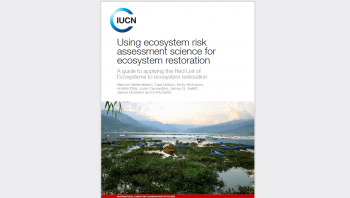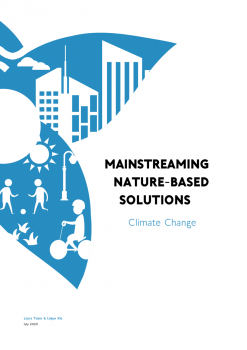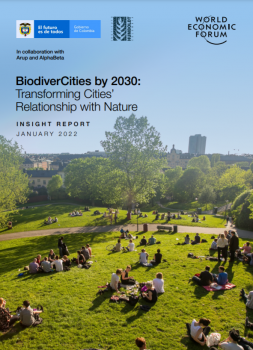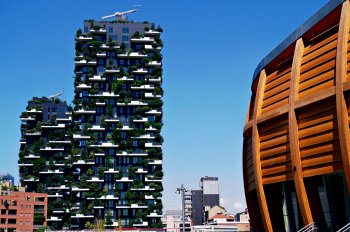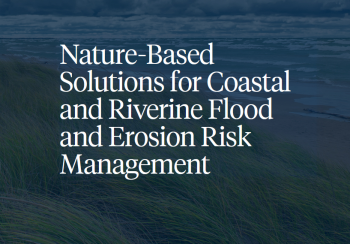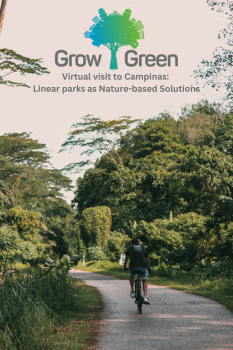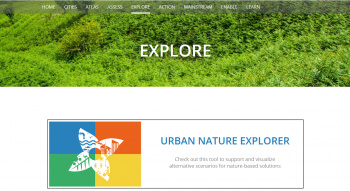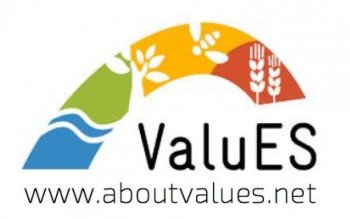- Document
Partnership Declaration on Collaborative Climate Action
A significant result of ICCA2019 is the Partnership Declaration on Collaborative Climate Action across all levels of government. In the declaration, states, cities, municipalities, federal states, regions and networks commit to more collaboration, communication and support in the implementation of
The Cities and Biodiversity Outlook - URBES Factsheet #4
This Factsheet highlights some of the mian highlights from the Cities and Biodiversity Outlook - the first scientific assessment of how global urbanization trends affect biodiversity and ecosystem dynamics. It explains how biodiversity and ecosystem services can be managed and restored in
European Long-Term Ecosystem and Socio-Ecological Research Infrastructure (eLTER H2020)
The overall aim of the eLTER project is to advance the European network of Long-Term Ecosystem Research sites and socio-ecological research platforms to provide highest quality services for multiple use of a distributed research infrastructure.
Using ecosystem risk assessment science for ecosystem restoration: A guide to applying the Red List of Ecosystems to ecosystem restoration
This guide was developed to promote the application of the science of ecosystem risk assessment, which involves measuring the risk of ecosystem collapse, in ecosystem restoration. It explores how the IUCN Red List of Ecosystems and ecosystem restoration can be jointly deployed to reduce risk of
Mainstreaming Nature-Based Solutions: Climate Change
Nature-based solutions are increasingly integrated in urban development practices. They can help to effectively address the climate crisis. These natural climate solutions in cities can both reduce the impacts of climate change (adaptation) and reduce greenhouse gas emissions (mitigation).
Nature-Based Solutions and the Green Economy
Broadly speaking, nature-based solutions refer to “actions to protect, sustainably manage, and restore natural or modified ecosystems, that address societal challenges effectively and adaptively, simultaneously providing human well-being and biodiversity benefits.” There is significant and
Website: Post 2020 Biodiversity Framework EU Support
Explore the resources of Post 2020 Biodiversity Framework - EU Support website to keep up to date on the agenda and learn from a wealth of scientific resources about biodiversity.
BiodiverCities by 2030: Transforming Cities’ Relationship with Nature
Cities are the engine of the global economy - contributing 80% of the world’s GDP – but their exponential growth in recent decades has come at the expense of nature. The built environment has grown by two-thirds in the first 12 years of the 21st century, leading to the degradation of local
Principles for delivering urban Nature-based Solutions
This report aims to enable more ambitious targets related to NbS, climate resilience and ENG, and ultimately increase the application of NbS, both wild and cultivated, in urban areas. To achieve this, the report sets out six principles to assist organisations and individuals in the design,
Innovating with Nature: From Nature-Based Solutions to Nature-Based Enterprises
Nature-based solutions (NbS) to address societal challenges have been widely recognised and adopted by governments in climate change and biodiversity strategies. Nevertheless, significant barriers exist for the necessary large-scale implementation of NbS and market development is still in its
Nature-Based Solutions for Coastal and Riverine Flood and Erosion Risk Management
Canadian communities and infrastructure are vulnerable to coastal and riverine flood hazards. The risks associated with coastal and river flooding are escalating as a result of development in river floodplains and coastal zones, and the effects of climate change on flood and erosion hazards. There
GrowGreen visit to Campinas: how linear parks can make a difference for people, nature and the economy
In order to strengthen engagement from political decision-makers and to create opportunities for the replication of Nature-Based Solutions (NbS), the political representatives of the GrowGreen cities were invited to participate in a virtual visit to the city of Campinas, Brazil. With more than 1
Stakeholder Engagement Guide - Nature Based Solutions in Cities
What is this guide? Guidance and a set of tools to establish a strong and consistent foundation for outreach and engagement when undertaking City projects in Nature Based Solutions, Regeneration, Housing etc. Who is it for? Any City Official carrying out a natural or built environment project that
Restoration Ecology: Interventionist Approaches for Restoring and Maintaining Ecosystem Function in the Face of Rapid Environmental Change
Restoration ecology provides the conceptual and practical frameworks to guide management interventions aimed at repairing environmental damage. Restoration activities range from local to regional and from volunteer efforts to large-scale multiagency activities. Interventions vary from a “do nothing
Revitalizing Spaces
Methodology (accompanied by an online platform) for identifying and activating underused spaces through community-led proposals.
CO-IMPACT tool
Developed within the Connecting Nature Project, CO-IMPACT is a decision-support tool allowing officers and cities to create impact assessment plans for their NbS/projects. The main objective is to make the process of building a baseline and impact assessment plan straightforward and simple for
Urban Nature Explorer
As a web-based interactive platform, the Urban Nature Explorer aims to support the development and the visualization of alternative nature-based solution scenarios and assess their costs, benefits, and impacts on selected urban sustainability challenges (e.g. climate change, stormwater management
- Video
PHUSICOS: Unstable till slope at Santa Elena
The slope at Santa Elena has been pointed out as one of the high-risk locations along road A-136, which is an important route between Spain and France (road RD-934 in France). The problem is erosion and instability in a steep slope, cut in a thick till deposit. This is an end moraine formed by the
EU level ecosystem services mapping toolbox
This dataset contains maps of supply and demand of a few ecosystem services, and GIS tools to make such maps. The tools are targeted at EU level and provide a broad picture of ES supply and demand. Tools are moderate complexity methods for mapping, that upscale findings from detailed process based
GIZ ValuES - Method Profile: TESSA – Toolkit for site-based ES assessment
The TESSA-toolkit focuses on a site-scale-level, such as a wetland, using information gathered locally. The toolkit can help assess climate regulation, flood protection, water provision, water quality improvement, harvested wild and cultivated goods and nature-based recreation. The toolkit is
- ‹ previous
- 13 of 48
- next ›



